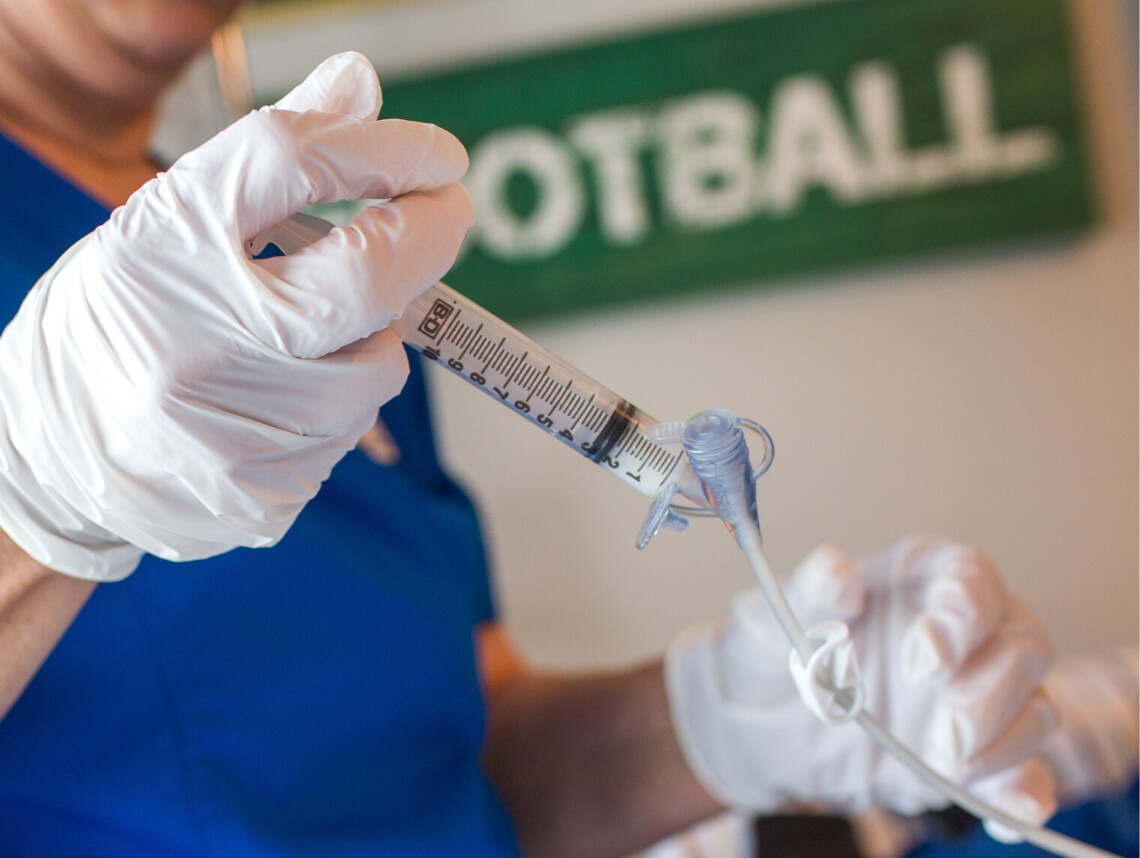
Parenthood is one of the toughest jobs you’ll ever experience. The hours can be long, the monetary pay is nonexistent, and your clients have a ton of needs – yet despite all of that, parenthood is worth it. The look your child gives you as you hold them, the way they curl up in your arms, there’s no feeling in the world that can beat it. But, no parental guidance book can prepare you for everything life throws toward you and your little one.
Some children may require a gastrostomy tube — also called a G-tube — to help them eat. If your child does, caring for your little one has become a little more complicated. That’s because gastrostomy tubes require diligent maintenance – including cleaning, feeding, and washing. But, what is a gastrostomy tube, and how can you care for a child who needs one?
What are G-tubes?
G-Tubes — also known as feeding tubes — provide nutrients to patients who cannot consume nutrients on their own. There are a variety of reasons why someone is incapable of obtaining their own nourishment. They may have an impairment in the mouth or throat that makes it difficult to chew or swallow, or they may have a condition that causes food to go down the wrong windpipe. Some of the most common reasons include:
- Premature birth
- Gastrointestinal issues
- Congenital heart disease
- Cancer
- Renal problems
- Cerebral palsy
- Amyotrophic lateral sclerosis (ALS)
How to Care for a Child’s G-Tube
When your child has a G-tube inserted, their doctor will provide instructions for how to maintain the medical piece and keep your loved one safe. These instructions will help you monitor your child’s site for infection, dress the wound, bathe the skin around the tube, check its position, flush and clean the tube, and what to do if the tube becomes dislodged. All of these instructions can be a little overwhelming at first, but you’ll quickly become accustomed to each step.
Steps for Feeding
- Wash your hands.
- Attach the syringe to the feeding tube.
- Fill the syringe with the measured amount of formula.
- Attach the pump or the syringe to the feeding tube.
- Unclamp the G-tube.
- Gently push with the plunger of the syringe to help start the flow of the formula, then remove the plunger and allow gravity to do the work.
- Hold the syringe at the height necessary to flow at the desired speed – keeping in mind not to feed too fast. Most feedings should take about 20 minutes.
- Continue adding formula to the syringe until the desired amount has been fed.
- Add a small amount of water before all the formula has flowed out of the syringe. This will flush the tube.
- Clamp the G-tube and close the cap.
Steps for Cleaning
- Dip a corner of a washcloth into warm, clean water.
- Add some mild, unscented bath soap to the corner of the washcloth.
- Gently wipe around the G-tube hole using the wet and soapy corner of the washcloth.
- Dip a new and dry corner of the washcloth into warm, clean water, but don’t add soap.
- Wipe around the G-tube site to rinse off the soap.
- Dry the G-tube area with a clean washcloth.
What to Do If the G-Tube Comes Out
- Remain calm.
- Wash your hands.
- Get the foley catheter or another G-tube.
- Lubricate or wet the end of the foley catheter or G-tube.
- Slide the foley about three inches into the hole. Tape the catheter to your child’s skin. If putting in a new G-tube, fill the balloon with 3 – 5 ml of water.
- Call your doctor or visit an emergency room if your normal doctor is unavailable.
Troubleshooting G-Tube Issues
There are some risks that come with maintaining and having a G-tube. The biggest risk is an infection. If the area around your child’s G-tube site is swollen and your child has a fever, they may be developing an infection. Other signs of infection include:
- Pus coming out the G-tube hole
- Skin is red or moist
- The crosspiece around the G-tube will be tight
If this is the case, you should contact your doctor immediately. They’ll prescribe antibiotics or antibacterial cream to help provide relief and eliminate the infection. But, infection isn’t the only complication that can occur. Other issues may include:
- Feeding is going into the G-tube too quickly, causing nausea
- The G-tube has slipped into the stomach too far
- Constipation
- Granulation tissue formation
- Skin infections
- Tube is leaking
- Tube is clogging
Contact Care Options for Kids For Pediatric Home Health Care
It can be hard to balance your time between work, home, and caring for a child. That’s why our team of skilled professionals at Care Options for Kids is here to help.
Our home health care services offer support in the comfort of your home. We refer loving and competent nurses to provide customized care for families — from a few hours a day to around-the-clock supervision. Contact us directly to speak with a home health care professional or request a free in-home assessment. Together we can determine the best plan of action to keep your loved ones happy and healthy.
If you are considering pediatric home health care services, contact the caring staff at Care Options for Kids. Call today at (888) 592-5855.
